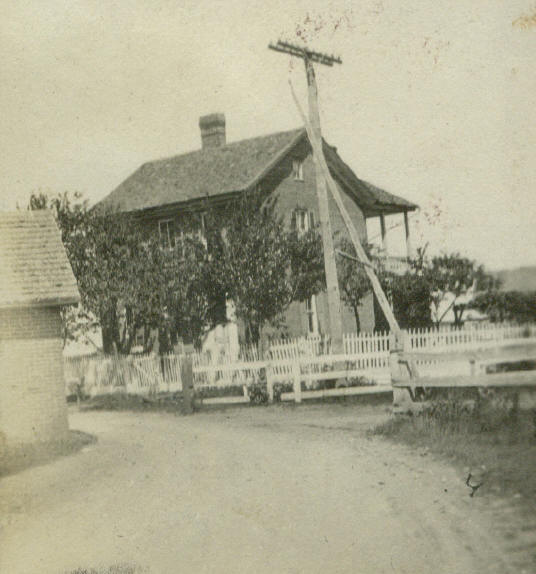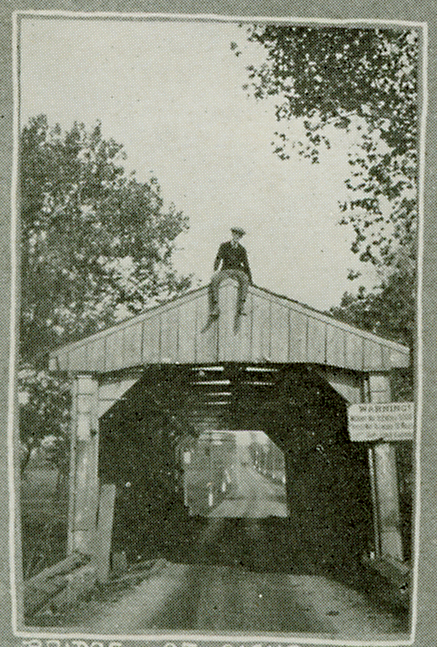When we consider the "good old days" we of course tend to remember with fondness. Life seemed simpler then but that’s because we
didn’t have to deal with roads ankle-deep in mud for months during the spring or fall, or deep hard ruts that broke wheels in the summertime, or chest
high snow that led to one’s wagon or buggy frozen in for weeks. With rare exceptions, the maintenance of the road that went past one’s home was the
responsibility of the adjacent landholder.
Those rare exceptions were private turnpikes, and like today’s modern turnpike, one paid a toll for using them. Turnpikes, also
known as ‘Plank or Corduroys Roads,’ were constructed by laying down planks of lumber upon which the wheels of a cart would roll. While the planks did
prevent the wheels of wagons from sinking into the mud, it did nothing for the poor horses that still had to slog through the mud.
In addition to laying planks, turnpike companies also built covered bridges over streams and creaks, making their fording
possible year round. It was usually at or near the bridges that the tolls were collect. And as the tolls need to be manned 24 hours a day, a toll house
was usually built in which the toll keeper lived. Such was the case for the toll gate that once stood at the top of the hill on the road leading from
Emmitsburg to Frederick.

The road from Emmitsburg to Frederick first started as a simple path to William Emmit’s Mill on Tom’s Creek, and ended there are
late as 1797. Sometimes thereafter the need for a faster route to Frederick led to the building of the Frederick turnpike (Old Frederick Road) and with
it, a covered bridge over the creek.

History records the name of only one individual who held the position of toll Keeper- Michael McFadden in 1880. Sadly we know
next to nothing about the other men and women who held that position.
The toll for crossing the bridge with a wagon was 25 cents, 10 cents for horse and rider, and 2 cents for a person on foot. A
hefty fee given that few earned more then a dollar a day at the time. Of course you didn’t have to pay the toll. You could always take a side road down
to a public ford and cross the creek there. But then you risked being stuck in the mud or breaking a wagon wheel on a rock in the creek.
Like tax collectors, toll keepers were not seen in the highest of light by the common man.
In the 1912 novel on life in Emmitsburg - The Contralto, the author depicts the following
exchange at the toll gate:
"Nearing the toll gate he called to Bob to know if he had the change, the boy assuring him that he would fix it. Suddenly a
lantern appeared, the team halting as Bob's grinning face looked out at one side of the wagon.
"Clerical dooty" he shouted; the bar swung up, the team 'passed through. The ladies laughed softly, while the Professor sought
enlightenment.
"It's this way, Professor, you don't pay no toll when you're on clergical dooty. They know me and think I got the Rector in
here."
"That isn't honest, Bob," the Professor replied severely.
"They don't keep their old roads up anyway," argued the red-haired sophist; "they wouldn't pay for it if one of 'my hosses
broke his laig."
"You cannot convince a Emmitsburger that toll-gates are but evil institutions to be beaten whenever possible," explained
Marion; "it's useless to argue."
When the toll gate was removed is yet to be discovered, but it was not so long ago that many old timers still refer to the hill
as ‘Toll Gate Hill,’ and the brick gate keepers, the one next to the Getty Station as ‘Toll Gate House.’